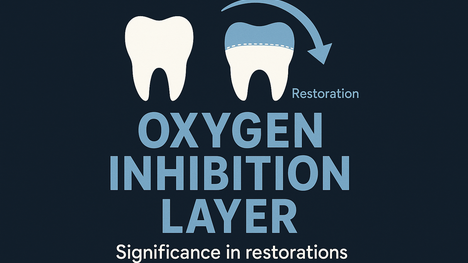
Decoding the Oxygen Inhibition Layer: A Hidden Key to Dental Success
In the intricate world of dentistry, each element plays a pivotal role in achieving excellence. Among these complexities lies the Oxygen Inhibition Layer (OIL), a component often overlooked yet critical in enhancing the quality of composite restorations. Understanding how to navigate this layer through effective techniques can not only improve clinical outcomes but also foster greater patient trust.
The Science Behind the Oxygen Inhibition Layer
The OIL is an uncured layer that forms on composite resin surfaces when exposed to oxygen during the light-curing process. This layer, typically measuring 10-40 micrometers thick, results when oxygen molecules interfere with the free radical polymerization of composites, leaving monomers unpolymerized at the surface. This uncured finish presents both opportunities and challenges.
Maximizing Bonding Potential with OIL
Interestingly, the OIL can be advantageous during the layering process. By leaving some uncured resin on the surface, clinicians create a favorable environment for subsequent layers of composite. When new material is applied to the OIL, inter-diffusion of monomers facilitates a stronger bond, enhancing the overall integrity of the restoration. But what is the methodology behind this practice?
Many dental professionals opt for a technique that emphasizes the importance of not fully curing intermediate layers. This strategic choice allows for optimal chemical bonding, leading to longer-lasting and more cohesive restorations.
Challenges Presented by the Oxygen Inhibition Layer
On the flip side, the OIL presents significant concerns when it comes to the final surface of restorations. An uncured surface can result in a softer texture that is more prone to wear under pressure, leading to premature restoration failures and subsequent replacements. It does not end here; the aesthetic quality of the restoration can also be compromised, as a resin-rich surface tends to stain and discolor over time.
Moreover, there are potential health implications of leaving unpolymerized monomers in contact with soft tissues. Though experimental studies have indicated potential cytotoxicity, clinical data remains largely inconclusive. Regardless, the prudent approach remains to eliminate any possible risks by ensuring complete polymerization.
Implementing the Glycerin Solution
A highly effective method to mitigate the adverse effects of the OIL involves the use of glycerin gel. By applying a thin layer of glycerin atop the composite surface before the final cure, dentists can create an oxygen-free environment. This practice is straightforward yet essential in achieving complete polymerization and thereby enhances the durability and aesthetic outcome of the restoration.
Implementing this step requires precision and awareness within the workflow, as it might feel like an additional burden; however, the long-term benefits far outweigh the minor inconvenience.
Long-Term Implications for Dental Practices
The understanding and application of these principles can significantly influence how a practice operates and the level of patient trust achieved. When patients are aware of and understand the nuances of procedures—like the role of the glycerin blob—they appreciate the care and attention to detail involved in their treatments. This transparency can strengthen the patient-practitioner relationship, foster trust, and enhance practice growth.
Preparing for the Future: Embracing Innovation in Dentistry
As dentistry continues to evolve, embracing innovative techniques such as managing the Oxygen Inhibition Layer will be crucial for practitioners seeking to maintain high standards. Engaging in continued education and keeping abreast of the latest findings can equip practitioners with the tools necessary to adapt their approaches effectively.
In summary, understanding the oxygen inhibition layer and effectively managing it through techniques such as glycerin application not only improves the mechanical properties of dental restorations but also enhances patient satisfaction and trust. Now, more than ever, embracing these insights is essential for successful practice growth.
 Add Row
Add Row  Add
Add 




Write A Comment